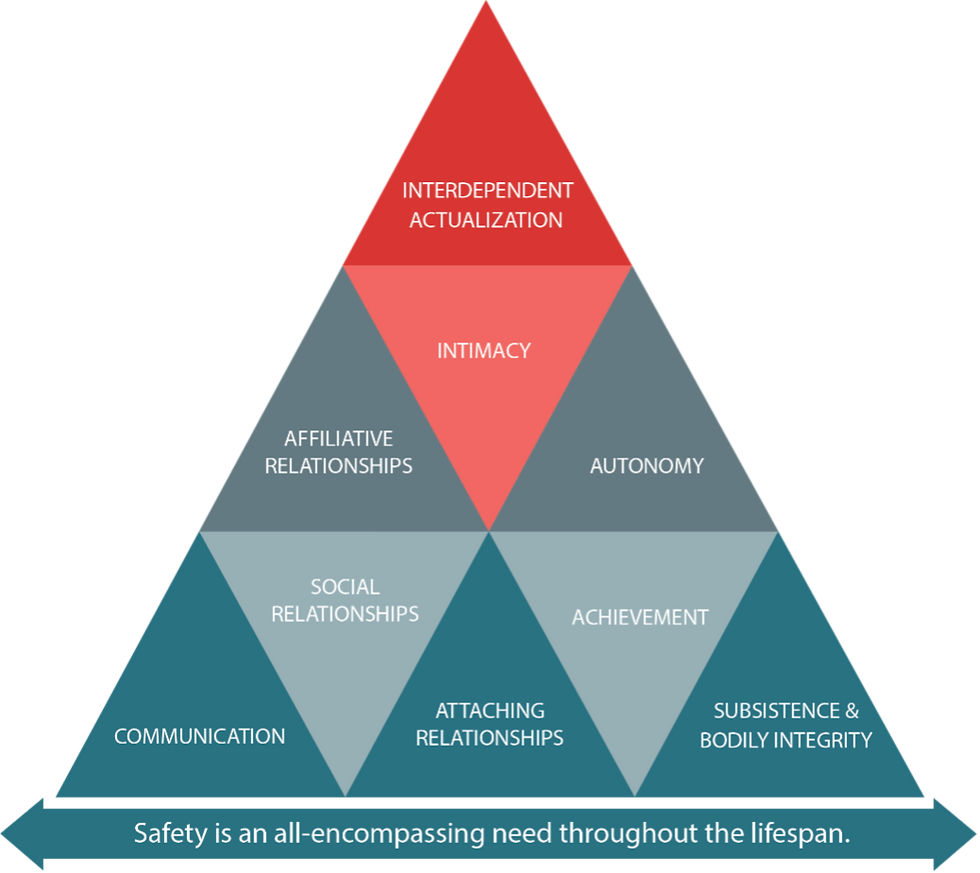
The Matrix of Needs is a model which was developed to reframe human needs, building on the work of Abraham Maslow and others. The model is explained on the website https://www.matrixofneeds.com, and the peer-reviewed journal article is available at DOI: 10.4236/health.2021.135041 Unlike Maslow’s model, the Matrix of Needs sees safety as being an all-encompassing, ever-present need. When the needs for food are met in unsafe, abusive conditions, some people may develop behavioural responses that over time become behaviours of concern or psychiatric disorders. Similarly, when people form relationships that are abusive or neglectful, over time behavioural responses to that lack of safety and security can be manifested as behaviours of concern as well as personality and mood disturbances.
Maximising safety for people is our most important task. Without safety, people will have a difficult time developing new, replacement behaviours for the behaviours of concern that are often the starting point for human service relationships. There has been a great deal of research on quality of life for individuals affected by disabilities, with the work of Albrecht and Devlinger (1999) being one of the earliest and most comprehensive.

For people who are autistic, safety will have different indicators, different factors but with similar themes. Helen McConachie and others published a paper in 2017 in the Journal of Autism and Developmental Disorders on Enhancing the Validity of a Quality of Life Measure for Autistic People. They identified the following factors that together led to QoL for people who are autistic:

With the exception of the sensory input component, the factors that Albrecht & Devlinger found lead to a high quality of life for people affected by intellectual disabilities are similar to factors that are important for autistic individuals. When considering the questions of how to help people develop self-regulatory skills so they can de-escalate, having a high quality of life will make that process not only easier, but possible.
By combining these two measures of quality of life, it is possible to develop an assessment in which the individual served is asked about the different elements which bring quality to the lives of people. It may also be helpful to ask family members and/or support staff who know the person well to identify the ways in which this person does, or does not, have a high quality of life.

When developing a Positive Behaviour Support plan, needs that are unmet can be seen as setting events that contribute to the escalation of behaviours of concern. By identifying the degree to which needs are, or are not met, supports can be developed by and with the individual.
Comments